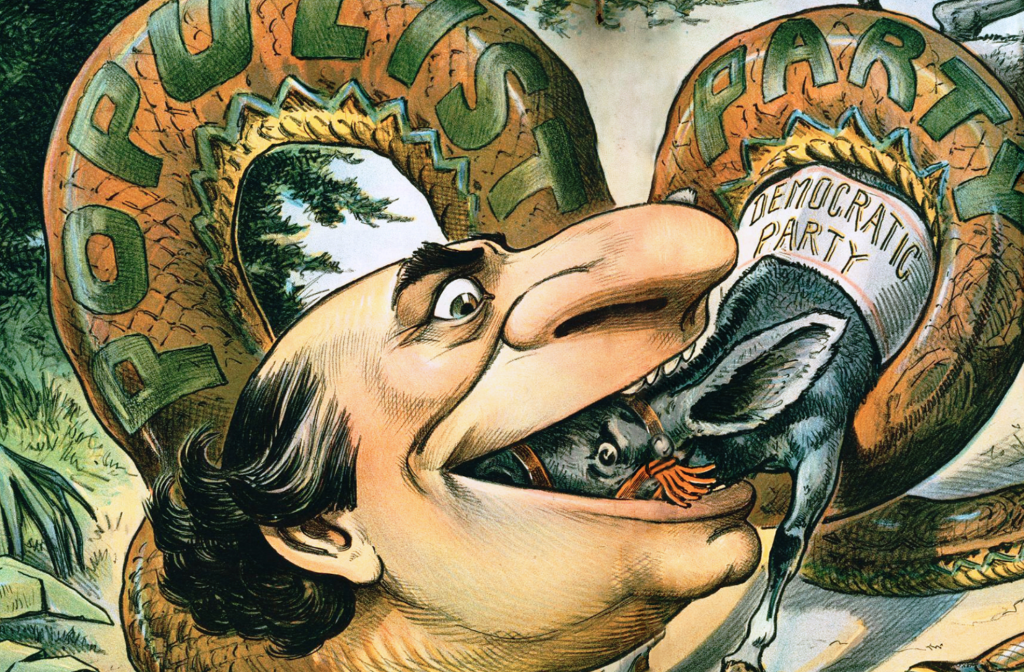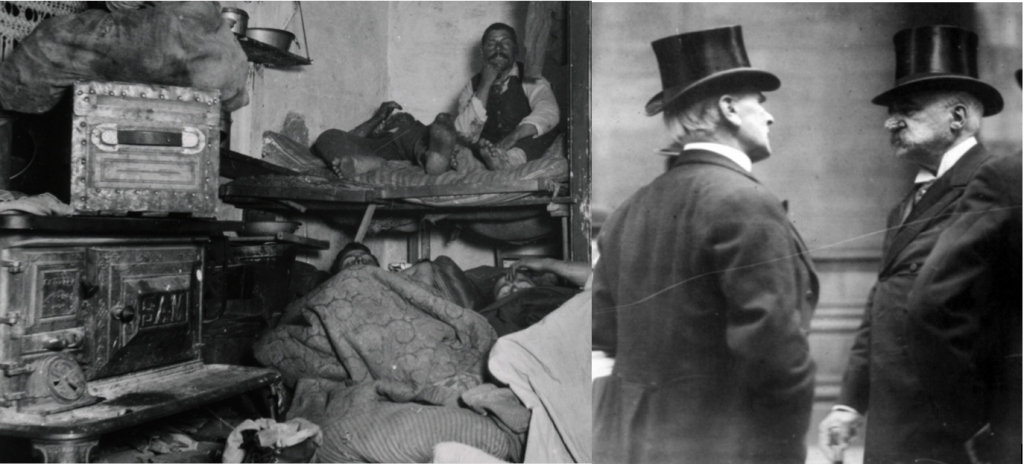Was the rise of industrial capitalism a triumph or a tragedy for most Americans?
American Yawp, Chapter 16: Capital and Labor
- I. Introduction
- II. The March of Capital
- III. The Rise of Inequality
- IV. The Labor Movement
- V. The Populist Movement
- VI. William Jennings Bryan and the Politics of Gold
- VII. The Socialists
- VIII. Conclusion
- IX. Primary Sources
- X. Reference Material
Image Gateway
For more information on this cartoon and William Jennings Bryan, see Chapter 16, Sec. VI from the American Yawp.
Overview
“This association of poverty with progress is the great enigma of our times,” –Henry George, Progress and Poverty (1879)
Beyond the problems of Reconstruction, there were also major disruptions and changes in American society that emerged during the 1870s involving the economy, natural landscape, and society at large. Greed and corruption seemed rampant. Economic inequality increased dramatically with widespread industrialization. Political and social tensions that had been held back somewhat during the Civil War now exploded into the public consciousness and for many defined an era that was as fast-paced and turbulent as any in their lifetime. Mark Twain famously labeled this period, “The Gilded Age,” in his satirical “Tale of Today,” a novel written in 1873 with Charles Dudley Warner.
Images from the American Yawp chapter on post-Civil War capitalism: (left) NYC tenement, circa 1890; (right) banker J.P. Morgan, circa 1907
Discussion Questions
- Can you illustrate the paradox that Henry George described and which is embodied by the juxtaposition of the images above with examples from American economic life in the post-Civil War era?
- How did social conflicts over industrialization impact race relations in the decades after the Civil War?
- What does the American Yawp label William Jennings Bryan as “among the most influential losers in American political history”?
Timeline
- 1873 Panic begins with downturn lasting for several years
- 1877 Farmers’ Alliances begin to organize in Texas
- 1877 Great Railroad Strike creates widespread unrest
- 1886 Protests and violence at Haymarket Square in Chicago
- 1892 Peoples’ Party organizes for presidential campaign
- 1893 Panic begins with an even deeper downturn than 1873
- 1894 Federal government intervenes in railroad strike
- 1896 McKinley defeats Bryan in heated presidential contest
- 1900 US leads world in manufacturing output
- 1901 J.P. Morgan organizes US Steel, the first billion dollar company
Some Key Statistics (via American Yawp, chapter 16)
- Nearly 100 people died during Great Railroad Strike of 1877 with an estimated $40 million in property damage.
- By the late 1880s, the Knights of Labor had over 700,000 members and the Farmers’ Alliances had over 1.5 million members.
- Between 1895 and 1904, nearly 4,000 companies (representing about 1/5 of the national economy) merged with rivals, creating conglomerates such as DuPont, General Electric, and US Steel.
- By 1900, the richest 10 percent of Americans owned an estimated 90 percent of the nation’s wealth.
- Republicans won 12 out of 16 presidential elections between Civil War and Great Depression.
- Nearly 80 percent of eligible voters cast ballots in the 1896 presidential election.
- In total, during the period around the turn of the 20th century, more than 1,000 socialists won political office in the US. Socialist presidential candidate Eugene Debs received 6 percent of the popular vote in 1912.
Featured Videos
Historian H.W. Brands offers an overview of the Gilded Age through profiles of three capitalists: John Rockefeller, Andrew Carnegie, and J.P. Morgan, in this hour-long videotaped lecture. Social studies teacher Tim Betts provides a somewhat shorter and snappier summary of the same information in a music video parody called “Robber Barons.”


